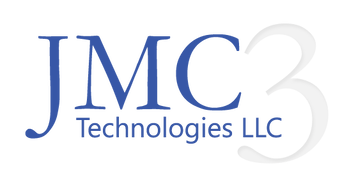Overcoming Time Management Issues in CPA Firms

Effective time management poses a significant challenge for CPA firms, as the delicate balance between client service, regulatory compliance, and internal operations often resembles a juggling act. With the rising demand for CPAs, firms face mounting pressure to produce high-quality work within stringent deadlines, all while ensuring profitability and preserving a healthy work-life balance for their employees. This article delves into the underlying causes of time management challenges in CPA firms and presents practical strategies to address them.
Understanding the Root Causes
Before diving into solutions, it’s important to understand the common sources of time management struggles in CPA firms:
1. Client Expectations and Deadlines:
CPAs often find themselves managing a diverse array of demanding clients who expect not only high-quality service but also quick turnarounds on their financial needs. This constant pressure to meet tight deadlines—especially during peak seasons such as tax time—can create a challenging work environment. The intensity of these demands, coupled with the sheer volume of tasks that must be completed in a limited timeframe, can lead to significant levels of stress and ultimately result in burnout. Furthermore, this overwhelming workload can contribute to inefficiencies that impact the quality of the services provided, making it essential for CPAs to find effective strategies for coping with these challenges.

2. Complex Regulatory Environment:
The ever-changing landscape of tax laws and accounting regulations presents a unique challenge for Certified Public Accountants (CPAs), who must stay continually updated to navigate this complex environment effectively. This ongoing need for education and adaptation can consume a significant amount of time and resources. Furthermore, the pressure to ensure compliance with these evolving regulations, all while managing a robust portfolio of client work, exacerbates the time crunch that many CPAs experience. Balancing these responsibilities often requires meticulous planning and efficiency, making it essential for CPAs to prioritize their time wisely and stay informed about the latest industry developments.
3. Inefficient Processes:
Many CPA firms continue to rely on outdated or manual processes for essential tasks such as data entry, document management, and client communication. This dependence on antiquated methods often results in significant inefficiencies, which can lead to wasted time and missed deadlines. Consequently, these inefficiencies not only hinder the overall productivity of the firm but also impede their ability to provide timely and accurate services to clients, ultimately affecting client satisfaction and trust. As firms navigate an increasingly competitive landscape, the need for modernization and streamlined workflows becomes even more crucial.
4. Overwork and Burnout:
The culture in many CPA firms often glorifies long hours, pushing employees to consistently put in extra time at the office. This relentless focus on extended workdays can lead to significant employee burnout, impacting both morale and overall well-being. As a result, overworked staff often find themselves less productive, struggling to maintain the quality of their work. This decline in productivity creates a vicious cycle of inefficiency, where the expectation of long hours ultimately hinders the firm's overall performance and profitability.

Strategies for Conquering Time Management Challenges
1. Leverage Technology for Automation:
Embracing technology is one of the most effective ways to manage time better and enhance overall productivity. Tools like practice management software, automated workflows, and cloud-based accounting platforms can significantly reduce the time spent on routine tasks that often bog down daily operations. For example, implementing a solution like Canopy or a similar comprehensive practice management software can greatly streamline client communication, automate the intricacies of billing, and centralize document storage in an accessible manner. These innovations not only save valuable time but also eliminate the potential for errors that can occur with manual processes, allowing professionals to concentrate more on strategic aspects of their work.
2. Prioritize and Delegate:
Not every task demands the expertise and skills of a senior CPA. By effectively delegating work to junior staff or administrative assistants, senior professionals can create more space in their schedules to concentrate on high-value tasks that require their specific knowledge and experience. Additionally, prioritization is crucial in this process—it's essential to focus on what is most important and time-sensitive, identifying those pressing tasks to tackle first. Establishing a clear hierarchy of tasks can lead to more effective time management and ensure that critical deadlines are consistently met.
3. Set Clear Client Expectations:
Managing client expectations upfront plays a pivotal role in preventing last-minute requests and avoiding the pitfalls of unrealistic deadlines. Clear communication regarding timelines, deliverables, and the scope of work not only helps clients understand the process but also establishes a foundation of trust and professionalism. When clients are well-informed, they can align their expectations with your team's capabilities, thereby reducing unnecessary pressure and fostering a smoother working relationship.
4. Implement Time-Tracking Tools:
Time-tracking software can serve as an invaluable resource for CPAs seeking to understand where their time is spent and to identify areas of inefficiency. By analyzing time data, firms can make informed decisions to adjust processes, reallocate resources, and ultimately improve productivity across the board. This data is also highly beneficial for billing purposes, ensuring that all billable hours are accurately recorded and captured, which can lead to more transparent client interactions and better cash flow for the firm.
5. Continuous Professional Development:
Investing in continuous education for your team is a strategic move that can significantly aid in keeping them ahead of the ever-evolving regulatory changes without leaving them feeling overwhelmed. By implementing regular training sessions and providing timely updates, organizations can seamlessly integrate these learning opportunities into the workweek. This approach not only enhances their understanding of important regulations but also makes it much easier to manage their ongoing education alongside their client work. Ultimately, fostering a culture of continuous learning not only empowers employees but also ensures that the organization remains compliant and competitive in a rapidly changing landscape.
6. Encourage a Healthy Work-Life Balance:
Fostering a culture that truly values work-life balance is essential in today’s demanding work environment, as it can significantly reduce burnout while simultaneously improving overall productivity. It is vital to actively encourage employees to take regular breaks throughout the day, establish clear boundaries between work and personal time, and disconnect from work responsibilities after hours. By promoting these practices, organizations can ensure that their teams return to their tasks feeling refreshed and revitalized. A well-rested team is not only more efficient but also better equipped with the mental clarity and energy needed to handle the increasing demands of busy seasons, leading to more innovative problem-solving and enhanced collaboration.
7. Regularly Review and Optimize Processes:
Time management should be viewed as an ongoing priority that requires constant attention and adaptation. Regularly reviewing your firm’s processes is crucial to identifying potential bottlenecks and areas ripe for improvement. Engaging your team in these discussions can reveal invaluable insights; employees often have firsthand knowledge about what’s working well and what isn’t, making them an essential part of the optimization process. By fostering an open dialogue around efficiency, firms can create a culture of continuous improvement that not only streamlines workflows but also empowers employees to contribute to the firm’s success.

Commonly Asked Questions
What role does technology play in improving time management in CPA firms?
- Technology plays a crucial role in automating routine tasks, streamlining workflows, and centralizing information. Tools like practice management software, automated billing, and cloud-based accounting platforms can significantly reduce the time spent on manual processes.
For example, Canopy is a popular practice management solution that centralizes client communication, automates billing, and integrates document storage. Another tool, Xero offers cloud-based accounting and invoicing, which allows firms to manage their finances more efficiently. These tools help CPA firms save time and focus on delivering high-quality service to their clients.
How can firms ensure they stay compliant with changing regulations without wasting time?
- Continuous professional development is key. Regular training and updates integrated into the workweek can help CPAs stay informed about regulatory changes, ensuring compliance without overwhelming the team.
For instance, firms can utilize AICPA's CPExpress an online learning library that offers a wide range of courses on current accounting standards and regulatory updates. Incorporating these resources into regular team meetings or dedicating specific times for learning can keep the team up-to-date without disrupting workflow.
What are some effective ways to delegate tasks within a CPA firm?
- Delegating routine tasks to junior staff or administrative assistants allows senior professionals to focus on higher-value work. Prioritization is also important—tackling the most important and time-sensitive tasks first can help manage workload effectively.
For example, Trello is a task management tool that can be used to assign tasks to different team members and track progress. This tool helps ensure that work is distributed according to priority and that everyone is clear about their responsibilities.
How can time-tracking tools benefit CPA firms?
- Time-tracking tools help firms understand how time is being spent and identify inefficiencies. This data can be used to optimize processes, reallocate resources, and ensure that all billable hours are captured, improving productivity and profitability.
Tools like Harvest or Toggl provide detailed reports on time spent on various tasks, enabling firms to analyze where time is being lost and make necessary adjustments. This information can also be invaluable for accurate client billing and assessing project profitability.
Why is fostering a healthy work-life balance important in CPA firms?
- A healthy work-life balance reduces burnout and enhances overall productivity. Encouraging employees to take breaks, set boundaries, and disconnect after work helps maintain a well-rested and efficient team, especially during busy seasons.
Programs like Headspace for Work offer mindfulness and meditation resources that can be integrated into the workplace to promote mental well-being. Additionally, using time management tools like RescueTime can help employees monitor their work habits and encourage better time management.
How often should CPA firms review and optimize their processes?
- Regularly reviewing and optimizing processes is essential for ongoing time management. Engaging the team in these discussions can provide valuable insights into what’s working and what’s not, allowing the firm to make necessary adjustments and stay agile.
A tool like Asana can facilitate this process by allowing teams to track project progress, identify bottlenecks, and collaborate on process improvements. Regular team meetings can also be dedicated to discussing process efficiencies and areas for improvement.
Can small CPA firms benefit from these time management strategies?
- Absolutely. Small CPA firms can benefit significantly from leveraging technology, setting clear client expectations, and fostering a healthy work environment. Even small changes in process optimization and delegation can lead to improved efficiency and better client service.
For example, small firms might use QuickBooks Online for managing their accounting processes efficiently, or Slack for better internal communication and collaboration, which can save time and reduce misunderstandings.
What is the long-term impact of improving time management in a CPA firm?
- Improved time management leads to enhanced service delivery, higher client satisfaction, and better employee morale. In the long term, it can result in increased profitability, reduced turnover, and a stronger reputation for the firm.

We help Certified Public Accountants allocate less time to IT concerns and more time to their clients.

Contact Us
(973) 814-9771
info@jmc3technologies.com
Rockaway, NJ 07866
Services
Managed Services
Cyber Security
Backup and Disaster Recovery
Cloud Services
VoIP Solutions
JMC 3 Technologies, LLC All Rights Reserved
